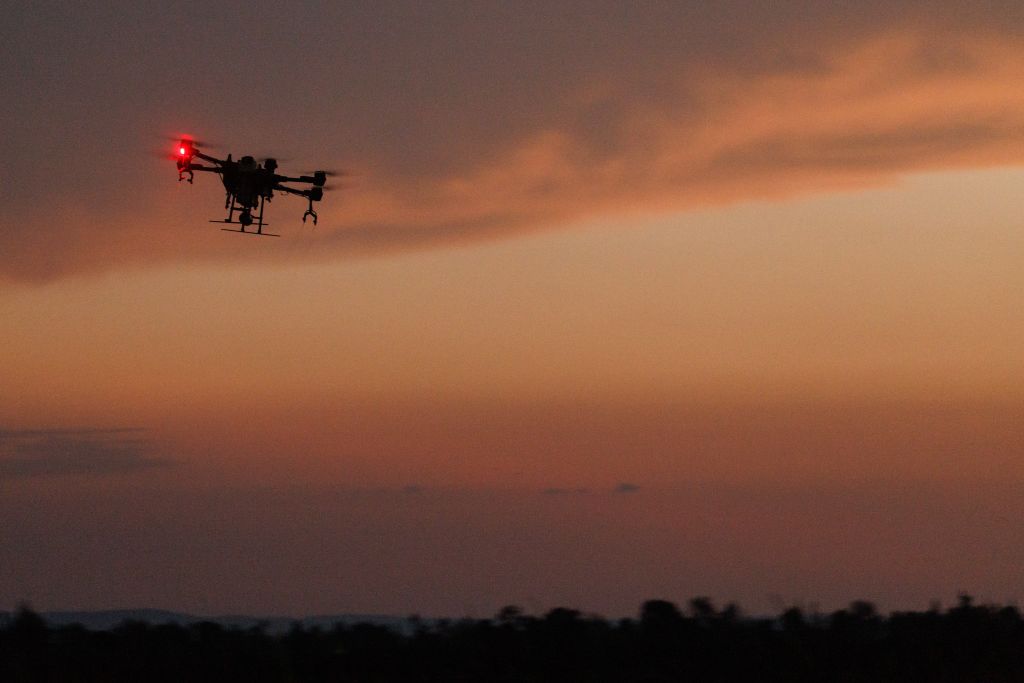For years, nations have searched for ways to secure porous borders against traffickers moving arms, drugs and people from one country to another. A growing number of experts believe that artificial intelligence (AI) can help security professionals solve those problems.
“The issue of artificial intelligence becomes very much fundamental, particularly in terms of risk management and in terms of enhancing effective border management,” South Africa’s Commissioner of Border Security Michael Masiapato said in a recent video statement.
South Africa has joined Ethiopia, Kenya, Sudan and Tunisia in deploying advanced technology, such as AI and drones, to enhance border security.
South Africa’s recent technology upgrade includes four quadcopter-style drones to monitor border crossings, including locations known for illegal crossings. The drones can operate in daylight or darkness using infrared cameras to track people crossing at night. Laser rangefinders pinpoint the potential border crossers’ location.
Adding AI to the border security mix lets security personnel analyze huge amounts of data collected at border crossings to predict potential threats and to deploy security personnel more effectively, according to Kithure Kindiki, Kenya’s deputy president.
During his previous role as Kenya’s interior cabinet secretary, Kindiki told a regional gathering on border security in 2024 that AI has an important role to play in future border protection.
“The use of technology, in particular digital technology, is crucial for future border control and management. Future border control management is going to be driven by data,” Kindiki told security experts from Ethiopia, Somalia, South Sudan, Tanzania and Uganda.
Kindiki noted that 27 of Kenya’s 47 counties have border security issues. Those issues have made Kenya a conduit for drug and human trafficking, along with terrorism and other forms of transnational crime, he added.
“To keep our borders safe and secure for Kenya and neighboring countries, the government has made significant investments in equipping security agencies with the latest technology and resources,” Kindiki said. “They will combat complex security threats such as terrorism, human trafficking and trafficking in narcotics.”
Kenya demonstrated the potential for using AI to secure borders after al-Shabaab’s 2019 attack on the DusitD2 hotel in Nairobi. Authorities used AI to study al-Shabaab’s communications and social media engagements, ultimately pinpointing the location of operatives, predicting their actions, and preventing future attacks, according to the Global Network on Extremism and Technology
This scenario underscores how AI can enrich awareness by providing intelligence that conventional approaches might miss.
Experts with the African Union High-Level Panel on Emerging Technologies (APET) recommend using AI to analyze border crossing images in real time and then to store those images securely for future study and to share among agencies and nations.
“In this way, this digital technology capability can help African countries better manage their borders against potential crimes,” APET experts wrote in a 2021 blog post. “Adopting such measures can also secure peace and stability across the African continent.”
Employing facial-recognition technology along the Kenya-Somalia border can detect al-Shabaab activities and patterns in a way that human analysts might not, according to analysts with the Global Network on Extremism and Technology.
“The use of recognition at checkpoints can help identify known terrorists or individuals of interest, facilitating responses based on solid information,” the analysts wrote.
For Kindiki, the future of African nations’ border security relies heavily on gathering, analyzing and protecting the data collected at border crossings.
“The use of technology, in particular digital technology, is going to become crucial for future border control and management,” Kindiki told the 2024 border security gathering. “If you have the data, you are going to be able to secure your territory. If you don’t have the data, it doesn’t matter the hardware and the human resources that you deploy.”

